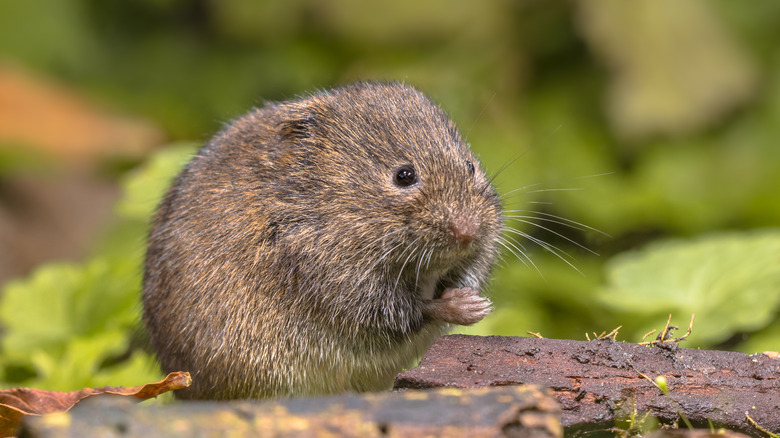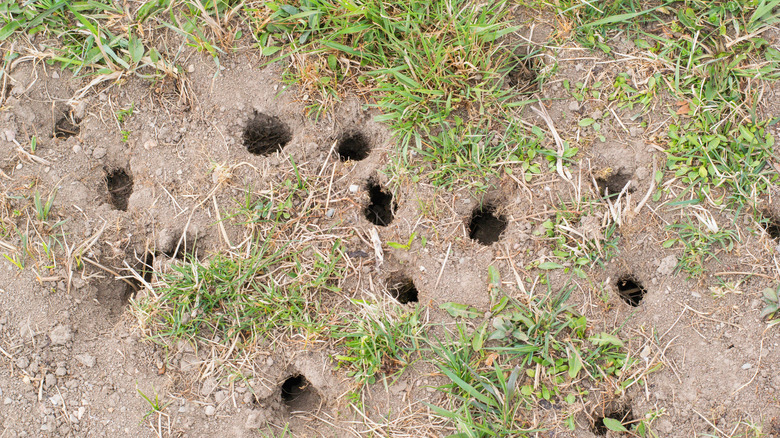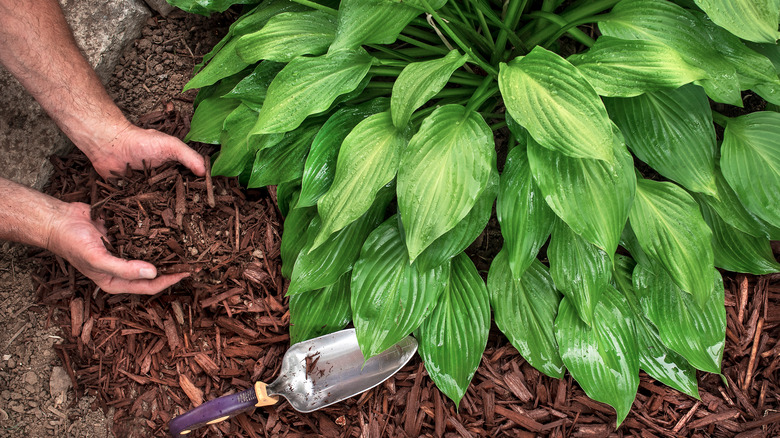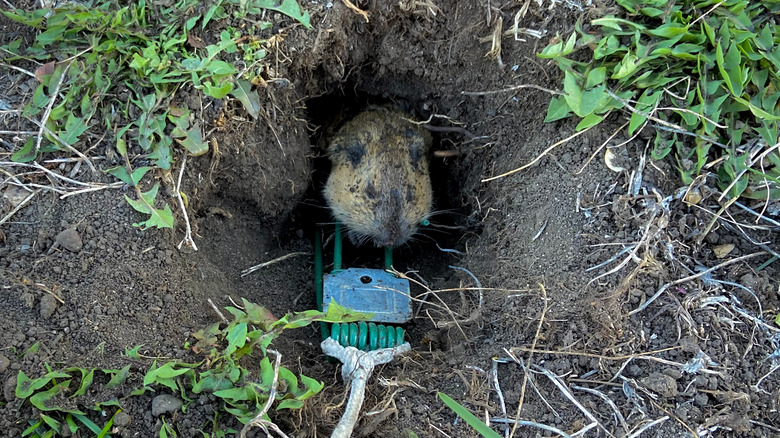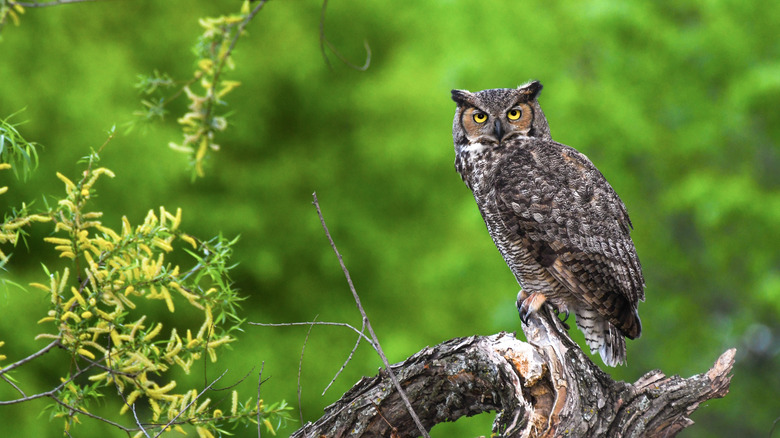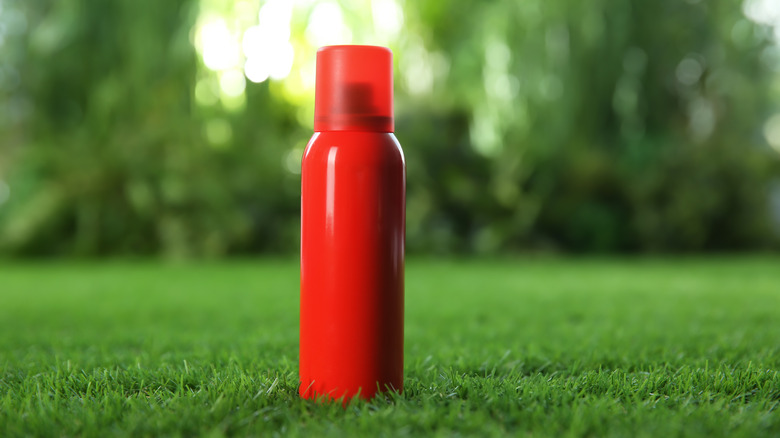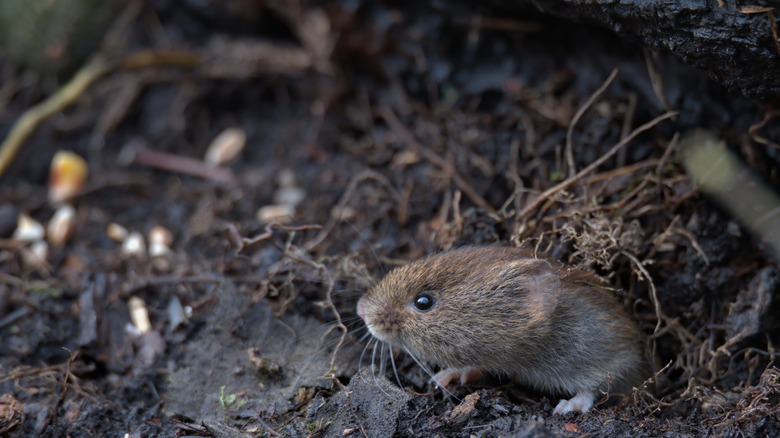8 Best Ways To Get Rid Of Voles From Your Yard
We may receive a commission on purchases made from links.
One minute you're relaxing in your backyard with tea and a novel, and the next, you're noticing signs of an animal infestation. You aren't sure, but after a quick Google search, you believe you have spotted the backyard damage of a vole (not damage from a mole, which is generally more common!) Now you need to develop an intelligent plan to eradicate these menaces from your yard before it's too late.
According to The Spruce, a vole is a relative of the adorable hamster, but be warned; these creatures are not the same. Voles can wreak havoc on your yard, the garden that you have lovingly tended to for years, and your beloved trees. Fine Gardening says they are similar to field mice and definitely not something you want loitering around your backyard as you're diving into a juicy chapter of your book.
Read on to find out eight of the best ways to rid voles from your yard.
1. Prevent an infestation
These pests "can have up to 10 litters a year. Just a couple of voles can produce over 100 offspring in a short amount of time," Dr. Nancy Troyano, board-certified entomologist for Ehrlich Pest Control, told Family Handyman. Since this is a fact, it's essential to watch for vole signs to prevent an infestation from ruining your yard.
According to Fine Gardening, you will want to know what to look for when it comes to the damage done to your yard, such as checking for gnaw marks on your plants' roots. Generally, you can tell it's a vole and not a rabbit if the marks measure 1/8 inches wide by 3/8 inches in length. The outlet suggests messing up their residence in your gardens, such as clearing out your weeds and dead leaves. Voles like to hide from predators under there, so clearing out your ground cover can force them to move.
2. Tend to your yard and garden
Thankfully, just tending to your yard can make a significant difference in its attractiveness to a vole, along with a slew of other pests such as grasshoppers, crickets, and frogs. As noted by Smith Pest Management, a residential and commercial pest control service company in the Bay Area, you'll want to keep your lawn mowed regularly. Other tips the company gives are limiting the mulch in your backyard and keeping your garden and trees pruned with plenty of fertilizer. This doesn't provide voles much cover from predators, which will force them to leave. You will also want to rake any vole paths, which are called "runways."
You want to make your yard unlivable for these rodents, which is one way to keep them out of your yard. As noted by The Spruce, keep watch on your perennials, such as your hosta plants and any root plants, as they love these.
3. Buy castor oil
Just like moles, furry voles detest castor oil, which makes it an excellent repellent to keep these pests out of your yard, per GreenView, maker of lawn care products. There are ready-made castor oil products on the market, such as Nature's MACE Mole & Vole Repellent, which will make your yard an unattractive place for voles to habitat. This product can cover up to 5,000 square feet of yard, uses 100% natural ingredients to keep the pests away, and is safe for your garden, lawn, and flowers. One reviewer who loved the results said, "It's easy to use, very inexpensive, and worked when nothing else did. I have had a recurring vole problem and have spent hundreds trying to get rid of them. I wish I had used this first! I have to reapply about once a month, but it lasts a long time. I fully intend on buying more."
4. Trap them
If you do not want to kill voles, you can trap them instead. However, according to Smith Pest Management, this method wouldn't be the best option if you have a significant infestation of voles. But if you are dealing with just a handful of rodents, this can work. Havahart, the makers of animal traps, suggests using the Havahart X-Small 2-Door Trap to trap voles humanely. The brand advises to strategically put the traps where the voles frequent, like near their holes. If you have an infestation, you will need anywhere from 12 to 24 traps, which is a significant investment. In addition to the metal traps, you will also need some bait. Havahart says that cherry pits, oatmeal, and bread with butter are some good options.
The University of California's Agriculture and Natural Resources department says that you could also use mouse traps to trap these rodents, which could be helpful if you have a rodent infestation as well.
5. Attract natural predators
Just as you can attract birds to your garden to eliminate a grasshopper infestation, you can do the same thing for voles. According to The University of California's Agriculture and Natural Resources department, some predators that eat voles include cats, owls, coyotes, foxes, badgers, weasels, and hawks. While you may not want to attract some of those animals, here's a way to attract owls.
Per the Owl Research Institute, you will only want to do this if it is safe for the owl. They suggest adding a nest box to your yard and keeping the lights out of your backyard. Cats are another animal that would love to feast on voles. According to Alley Cat Allies, they will come to your yard if you plant catnip, have a comfortable place for them to sleep, and feed them consistently. By having natural predators in your yard, you have a free way to keep voles away!
6. Hot pepper spray
As noted by Family Handyman, voles adamantly dislike hot peppers, so you can use this to your advantage when making your yard less appealing. The outlet advises purchasing hot peppers, then chopping them up and getting a spray bottle. Put the peppers in the bottle, and add dish soap and water to create the repelling spray. Next, venture out to your yard and spray any areas that voles love to hang out in.
Hunker also suggests making this hot pepper spray. However, they use boiled jalapeño peppers and yellow onions to create it. Once the pepper and onion are boiled in hot water, add cayenne pepper and 2 quarts of water. Strain the ingredients and add the liquid to your spray bottle. The outlet says to spray your plants at least every five days to ensure that your trees and shrubs are not a tasty treat for voles.
7. Purchase a product
If you have an infestation of voles, there is a product on the market called VoleX, which is effective at killing all varieties of voles. This could be used as a last resort. The non-toxic treatment was a success for one reviewer, who had a stubborn infestation of voles eating their entire garden. The reviewer was reluctant to use poison as they didn't want to hurt other wildlife, but other home remedies weren't working. "We then tried VoleX; I waited for dry weather for a few days. I placed one piece deep in each hole. Within a few days, we did notice a decline in missing plants. We then did a round two. By now, we have definitely noticed a decline."
Some reviewers explained that this is not "a one-and-done treatment" to get rid of an infestation. You may have to repeat the process to get rid of the pests entirely.
8. Bring in the wildlife experts
As with all pests, if you can't get a handle on your yard's vole infestation, then it's time to call the professionals to handle it for you! Ehrlich professionals are wildlife experts trained to know what damage voles can cause to a home's yard and garden. The company successfully removes burrows and a vole's habitat and informs homeowners on ways to prevent voles from returning.
Finding a professional that knows the latest techniques is an excellent idea to curb a vole infestation in your yard. Per Greenix Pest Control, which services several major cities throughout the U.S., there are four different types of voles. This includes meadow voles, prairie voles, water voles, and woodland voles, and an expert can see which type you have and then determine the best possible method for eradicating them from your yard. This takes the guesswork out of fixing your rodent problem, and guarantees results.
